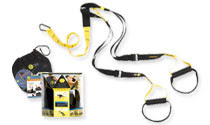Jeannine K. Hurst MS, ATC
Baseball season is upon us. Young baseball players, especially pitchers, may experience “Little League Elbow.”
The elbow is a joint where the upper arm bone (humerus) meets the two bones of the lower arm (Ulna and Radius). The elbow is a hinge and pivot joint. The hinge part of the joint allows the elbow to bend; the pivot part allows the lower arm to rotate. The throwing motion combines elbow flexion/extension and rotation. The repetitive forces from the above motion may pull tiny bone fragments away from the humerus. This can disrupt normal bone growth resulting in deformity.
This occurs when repetitive throwing creates a strong pull of the tendons and ligaments at the elbow growth plate. Growth plates are made of soft cartilage, and therefore are not as tolerant to forces as ligaments, tendons, or mature bone. It is generally the weak link for young pitchers.
The young athlete will complain of pain at the bump on the inside of the elbow. They may also complain of decrease range of motion. Pain is generally worse during and after pitching.
To help prevent ‘Little League Elbow’ all children should be limited in the number of pitches thrown per day. The USA Baseball Medical and Safety Advisory Committee have
published guidelines for maximum pitch counts based on age.
Maximum number of pitches/day
AGE (PITCHES PER DAY)
17-18 (105)
13-16 (95)
11-12 (85)
9-10 (75)
7-8 (50)
American Sports Medicine Institute 2008
How much rest do youth pitchers need?
Rest is a critical part to preventing injury. Below are charts to indicate proper rest time. Rest time indicates rest from pitching only. The athlete may play other positions on their ‘rest days.’
For pitchers age 7 to 16:
Pitches in a Day (Rest Time)
61 or more (3 days)
41-60 (2 days)
21-40 (1 day)
1-20 (0 days)
For pitchers age 17 to 18:
Pitches in a Day (Rest Time)
76 or more (3 days)
51-75 (2 days)
26-50 (1 day)
1-25 (0 days)
Little League International, 2008
If a child is complaining of elbow pain and/or restricted range of motion you should have them rest for a few days. If symptoms persist or reoccur when throwing is resumed discontinue throwing and consult a Sports Medicine Physician. The earlier an injury is diagnosed, the earlier treatment can begin. The result is everyone’s goal; shorter healing time and faster return to pitching.
http://www.scholarpreps.com/
Source:
Jeannine K. Hurst MS, ATC is a Certified Athletic Trainer at Providence Athletic Medicine. She holds a Bachelors degree in Sports Medicine and a Masters degree in Sports Medicine/Biomechanics
Wednesday, June 3, 2009
Subscribe to:
Comments (Atom)


